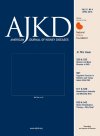Associations of Lack of Insurance and Other Sociodemographic Traits With Follow-up After Living Kidney Donation
Clinical and laboratory follow-up for living kidney donors (LKDs) may quantify risk, prompt early intervention, and inform donor candidates and donors.1 In 1999, the Organ Procurement and Transplantation Network (OPTN) requested that US transplant centers submit LKD follow-up forms 6 and 12 months after donation.2 Additional elements such as insurance status were added in 2004, with follow-up extended to 24 months in 2008. Noting poor performance, in 2013, the OPTN defined minimum transplant center follow-up thresholds, targeted to ≥80% and ≥70% for clinical and laboratory data, respectively.



